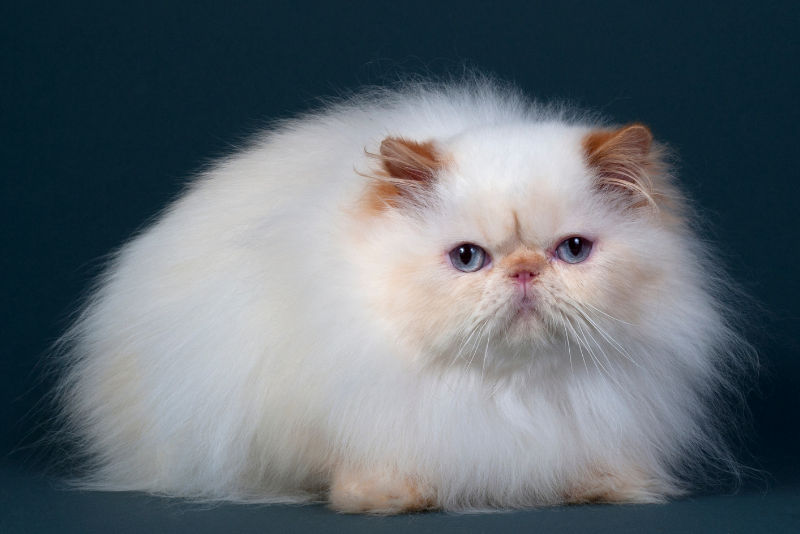
[AWPCPSHOWCAT id=90 children=true]
Persian cats are a popular breed of domestic cat that are known for their long, thick fur, round faces, and calm personalities. They have a long history, with the first recorded specimens of the breed dating back to the 17th century. Persian cats were originally brought to Europe from the Middle East, and over time, they have been bred to have a wide variety of coat colors and patterns, including white, black, blue, silver, and more.
What is the history of Persian cats?
The Persian cat has a long history dating back to ancient times. The breed is thought to have originated in the region that is now Iran, and they were likely brought to Europe by traders in the 17th century. The first known breeding program for Persian cats began in Italy in the late 1800s, and since then, the breed has become one of the most popular in the world.
What do Persian cats look like?
Persian cats have a distinctive appearance, with a round face, short nose, and long, thick fur. They have a wide variety of coat colors and patterns, including white, black, blue, silver, and more. They have large round eyes that can come in a variety of colors. They also have a broad chest and a sturdy build.
How Much are Persian Kittens?
Persian Kittens range in price, depending on the individual breeder. Most persian kittens range from $2,500 – $4,000.
What is the personality of a Persian cat?
Persian cats are known for their calm and docile personalities. They are typically good-natured and affectionate, and they make great pets for families and individuals alike. They are generally low-energy cats, and they tend to be more relaxed and laid-back than some other breeds.
What is the average lifespan of a Persian cat?
The average lifespan of a Persian cat is around 12-15 years. However, with proper care and nutrition, some Persian cats have been known to live for up to 18 years or more.
What kind of coat do Persian cats have and how do you groom them?
Persian cats have a long, thick coat of fur that requires regular grooming to maintain. They need to be brushed at least once a week, and they should be bathed every few months to keep their coat clean and healthy. It’s important to use a high-quality cat shampoo, to avoid irritation. As long hair can get tangled easily, regular trimming is also needed to prevent matting.
Are Persian cats hypoallergenic?
No, Persian cats are not hypoallergenic. They do shed a lot of fur and produce a fair amount of dander, which can trigger allergic reactions in some people. If you are allergic to cats, it is best to spend time with a Persian cat before committing to owning one to see if you have a reaction.
Are Persian cats good with children and other pets?
Persian cats are generally good with children and other pets, as long as they are introduced to them at a young age. They tend to be calm and docile, which makes them a good choice for households with children and other pets. However, like all cats, they have their own personality and should be trained to treat humans and other animals with respect.
What is the average weight of a Persian cat?
The average weight of a Persian cat is around 6-9 pounds for females, and 9-14 pounds for males. They are medium to large-sized cats and have a sturdy build.
Do Persian Cats have common health problems?
Yes, Persian cats can be prone to certain health problems due to their unique physical characteristics. Some of the most common health issues seen in Persian cats include:
Brachycephalic airway syndrome: Due to their short noses and small nostrils, Persian cats can have difficulty breathing. They may have an increased risk of respiratory problems such as snoring, snorting, and snuffling.
Eye problems: Persian cats have large round eyes that can be more prone to injuries, infections, and tearing. They also have a higher risk of developing certain eye conditions such as Progressive Retinal Atrophy (PRA) which can lead to blindness over time.
Dental problems: Due to their short muzzles, Persian cats may have a higher risk of dental problems, such as overcrowding, malocclusion, and tartar buildup.
Skin problems: The long fur coat of Persian cats can be prone to matting and tangling, which can lead to skin irritation and infection if not groomed properly.
Obesity: Persian cats are prone to obesity due to their sedentary lifestyle and tendency to overeat, which can lead to a host of health issues including diabetes, liver disease, and joint problems.It’s important to work closely with a veterinarian and to schedule regular check-ups to ensure that any potential health issues are caught and treated early.
